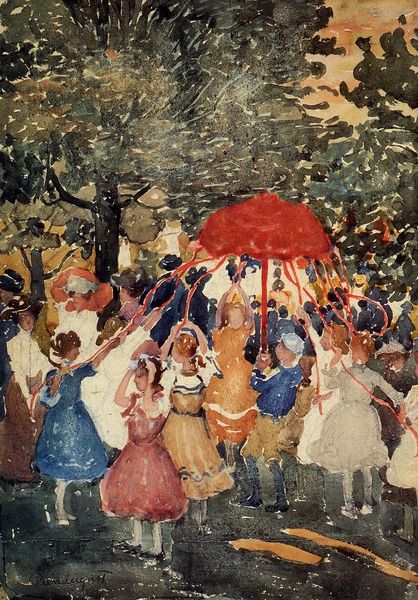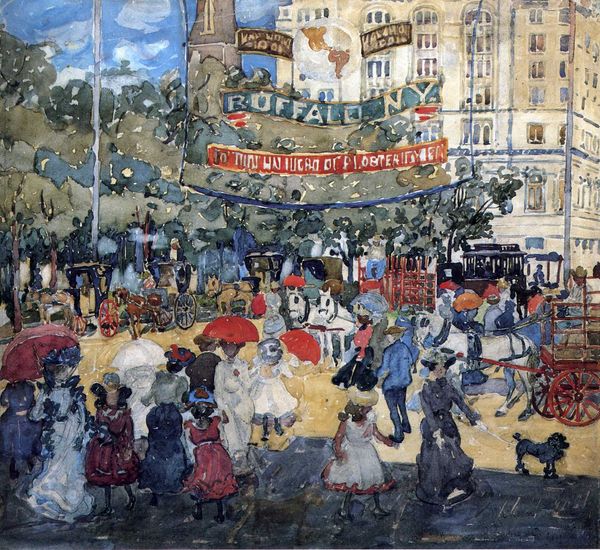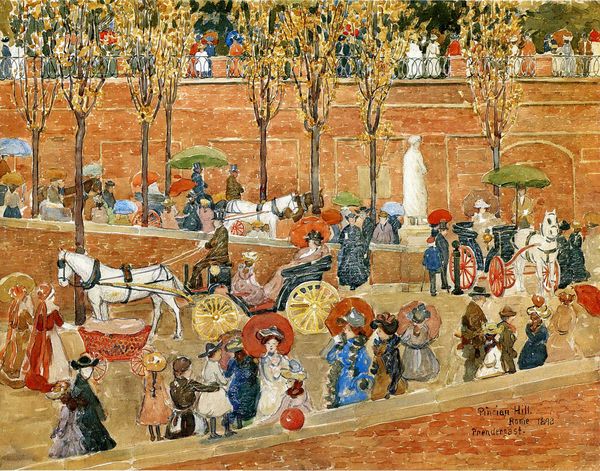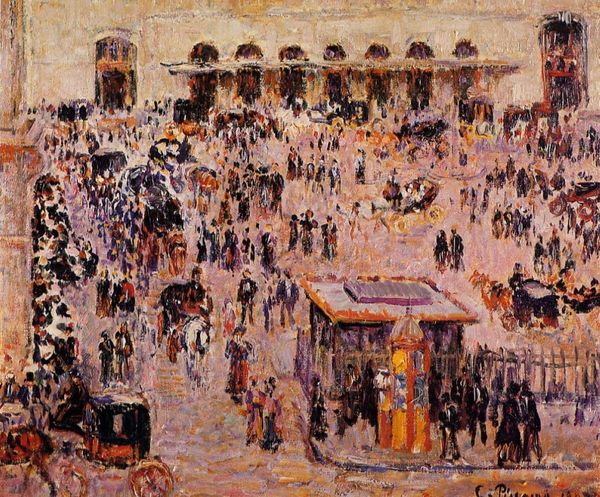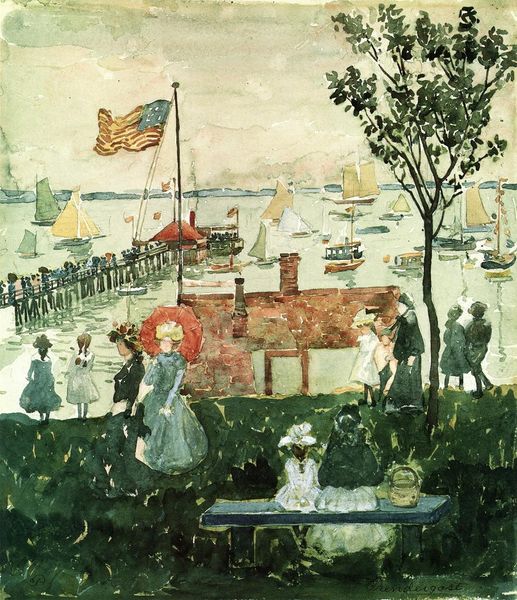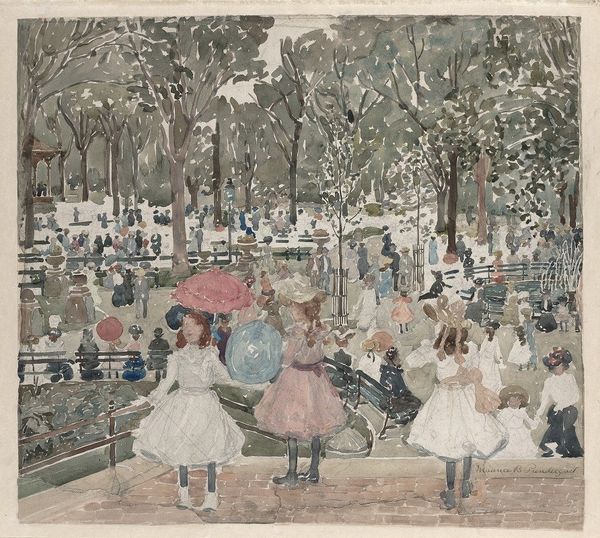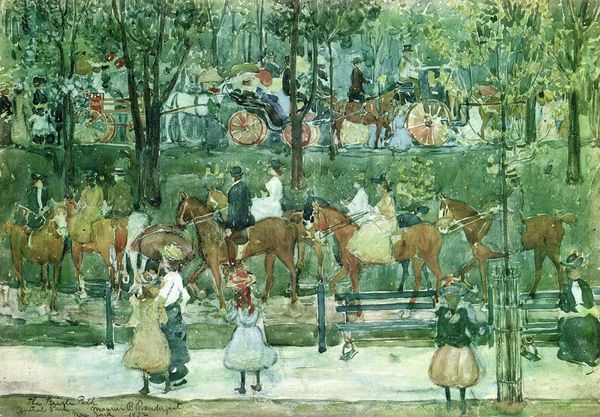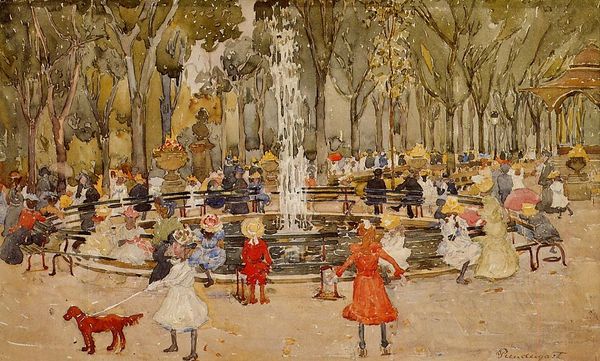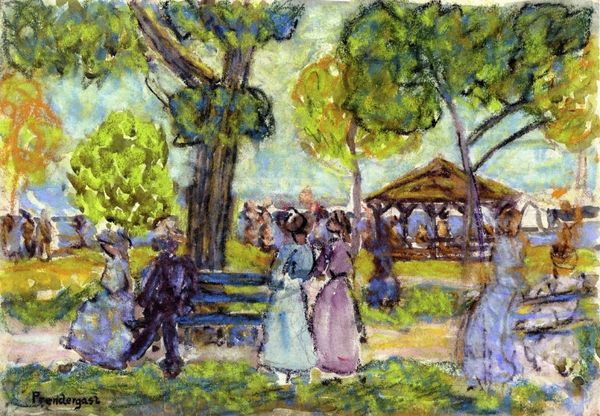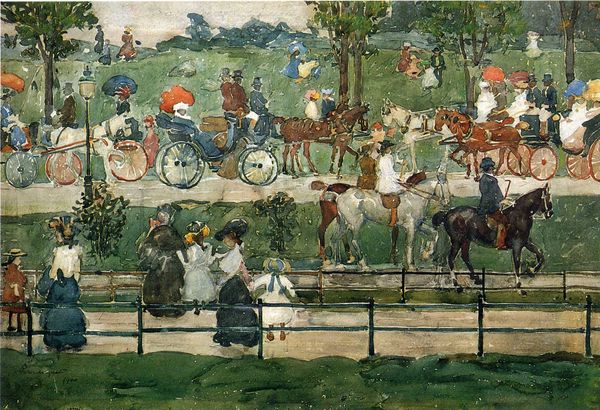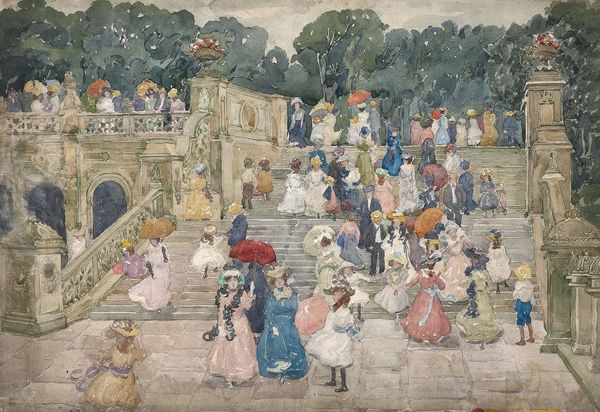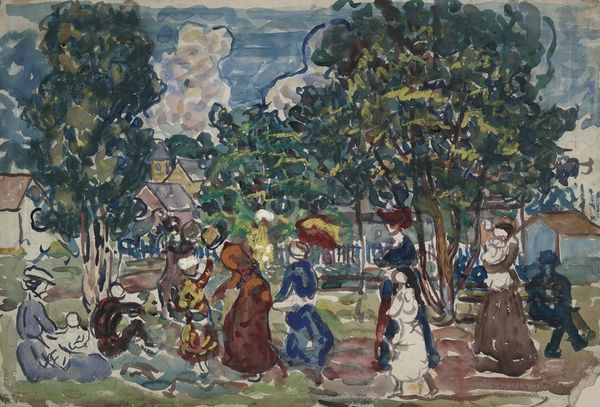
Dimensions: 35.56 x 58.42 cm
Copyright: Public domain
Curator: Here we have Maurice Prendergast’s “Columbus Circle (New York),” created around 1903. It's a lovely, bustling scene rendered in mixed media, primarily watercolor and perhaps some gouache, offering a glimpse into turn-of-the-century urban life. Editor: Oh, it's like a watercolor dream. Faded at the edges, like a forgotten memory. It’s sweet, but makes me kind of sad—those crowds feel so anonymous now. So long ago... Curator: That anonymity is precisely what's compelling, isn't it? Prendergast was quite interested in capturing the energy of modern urban life without idealizing it. Consider how the figures are treated; they are suggested rather than explicitly defined. There are people with hats and bonnets carrying shopping bags with lots of goods for sale. Editor: It's like pointillism but with mood, you know? Each daub of color contributes to the overall feeling. And the architecture isn't as important as the energy, almost like an emotional cityscape rather than a literal one. Curator: Precisely. Prendergast, drawing from his knowledge of Post-Impressionism, focuses on the sensory experience of being there, the interplay of light and shadow, the rhythms of the crowd. This was made in a period of great change for New York, both socially and physically. New industries and architecture had transformed the urban scene. Editor: You can almost hear the chatter, smell the horses, see the little cats scampering for scraps in the streets! But do you think that Prendergast's romanticism makes his pictures sentimental rather than insightful sometimes? Curator: I can see why you might read it that way. Yet his emphasis was really on representing an impression or an emotion rather than documenting specifics. Perhaps sentimentality is inseparable from memory. The picture has the trappings of sentimentality, but is also imbued with melancholy and transience. Editor: I suppose you're right. It's the melancholy that stays with me the most. Curator: In the end, perhaps that tension—between nostalgia and reality, specific and general—is what gives this work its enduring power. Prendergast masterfully captures a fleeting moment, an urban sonnet in watercolor. Editor: Well said. Makes you wonder what they were all thinking and feeling, those ghosts in the image. It is definitely a poignant scene frozen in time.
Comments
No comments
Be the first to comment and join the conversation on the ultimate creative platform.
